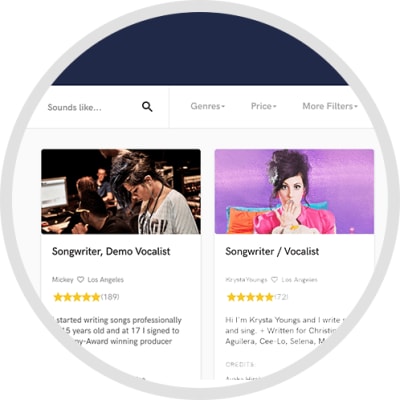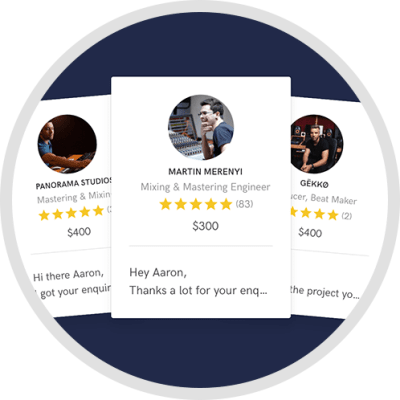User 5.

Anonymus intro

Search by credits or 'sounds like' and check out audio samples and verified reviews of top pros.

Contact pros directly with your project details and receive handcrafted proposals and budgets in a flash.

Fund and work on your project through our secure platform. Payment is only released when work is complete.